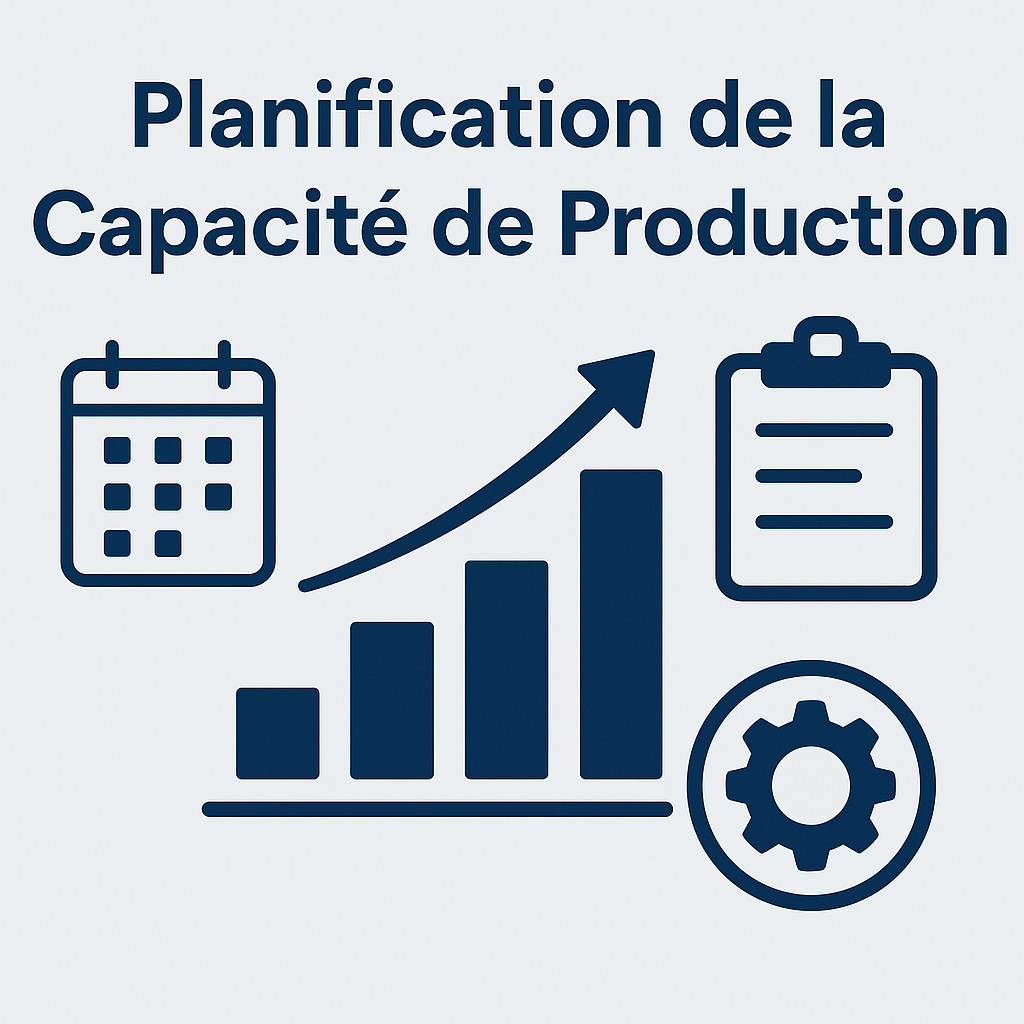
Production Capacity Planning: Optimizing Production to Meet Demand
Introduction
In an industrial environment marked by demand volatility, supply chain disruptions, and rising operating costs, production capacity planning has become a strategic lever to ensure profitability and operational performance.
It enables companies to effectively respond to fluctuations in demand while maximizing the use of available resources. Unlike simple short-term planning, this approach aims to align machine tools, workforce, and infrastructure capacity with actual and forecasted production goals.
This guide explores the fundamentals of capacity planning, its benefits, key implementation steps, and the technological tools to adopt in order to build an agile and effective strategy.
What is Production Capacity Planning?
Production capacity planning refers to the set of processes used to evaluate, anticipate, and adjust a company’s production capacity to meet market demand.
It involves determining how many products can be manufactured with available resources, machines, labor, and time, over a given period, and identifying gaps between current capacity and future needs.
There are two main types of capacity planning:
-
Long-term capacity planning: For guiding strategic decisions (investment, recruitment, new lines)
-
Short- to medium-term capacity planning: For optimizing resources over shorter production periods
Why is Capacity Planning Crucial?
Poor capacity assessment can lead to:
-
Delivery delays
-
Overload or underutilization of resources
-
Extra costs (overtime, subcontracting, waste)
-
Missed opportunities during demand peaks
On the other hand, well-executed capacity planning allows you to:
-
Align production with actual demand
-
Reduce costs by balancing workloads
-
Optimize equipment availability
-
Improve customer service quality
Key Steps in Capacity Planning
1. Analyze Demand
Start by collecting sales data, orders, commercial forecasts, or seasonality trends to estimate the upcoming production load.
2. Evaluate Current Capacity
Calculate available capacity based on machines, working hours, workforce, and actual operation schedules. This includes planned downtime, changeovers, and real production yield.
3. Identify Bottlenecks
Cross-reference capacity and demand to detect where capacity is insufficient. These critical points require adjustments (overtime, reorganization, subcontracting).
4. Define Adjustment Scenarios
Depending on identified gaps, simulate scenarios such as:
-
Adding shifts
-
Reallocating human resources
-
Purchasing or renting new machines
-
Reorganizing workstations
5. Integrate Capacity into Production Planning
Once adjustments are made, they must be reflected in production planning and workforce scheduling tools to ensure operational alignment.
Tools for Effective Capacity Planning
Advanced Planning and Scheduling Software (APS)
These tools allow real-time modeling of capacity, constraints, and resources, and help optimize planning through various scenarios.
Machine Monitoring Software
Provides real-time production data, tracks cycle times, downtimes, machine performance, and gives a clear view of actual capacity.
Integrated ERP/MES Systems
Integrating planning modules within ERP or MES ensures consistency between sales forecasts, capacity planning, and execution.
Dashboards and Data Visualization
Help compare planned vs. actual capacity, identify variances, and enable faster decision-making.
Key Performance Indicators to Track
-
Machine Load Rate: % of equipment utilization
-
Available vs. Required Capacity: Identifies tension areas
-
OEE (Overall Equipment Effectiveness): Measures global equipment efficiency
-
Cycle Time Efficiency: Highlights gaps between theoretical and actual cycle times
-
Demand Response Time: Ability to quickly adapt to changes
Real-World Example: Results from Better Planning
A CNC machining company faced recurring delivery delays despite high utilization rates. After implementing capacity planning software, they were able to:
-
Identify some stations running under capacity while others were overloaded
-
Redistribute tasks more evenly using a task planning tool
-
Reduce delivery delays by 35% in 3 months
-
Improve global OEE by 12 points
Integrating Capacity Planning into an Agile Strategy
Capacity planning is not a fixed exercise. In a constantly changing world, it must follow an agile and iterative approach. This involves:
-
Frequent data updates
-
Coordination between sales, logistics, HR, and production teams
-
The ability to simulate different scenarios quickly (stockouts, absences, urgent orders)
Top-performing companies integrate capacity planning into daily operations with a continuous improvement loop.
Best Practices
-
Involve all stakeholders (production, planning, maintenance, management)
-
Use actual machine data, not just estimates
-
Combine planning with execution, avoid separating strategy from operations
-
Simulate before acting, test plans before implementation
-
Measure, adjust, and revise, build continuous improvement into the process
Conclusion
Production capacity planning is a key asset to improving flexibility, performance, and industrial profitability. By anticipating needs, measuring real capacities, and strategically adjusting resources, companies can respond effectively to demand while keeping costs under control.
With modern tools, better use of machine data, and a collaborative approach, capacity planning becomes a pillar of industrial competitiveness. It helps align resources with goals, ensure smooth production, and build a more agile and resilient business in today’s challenging market.





